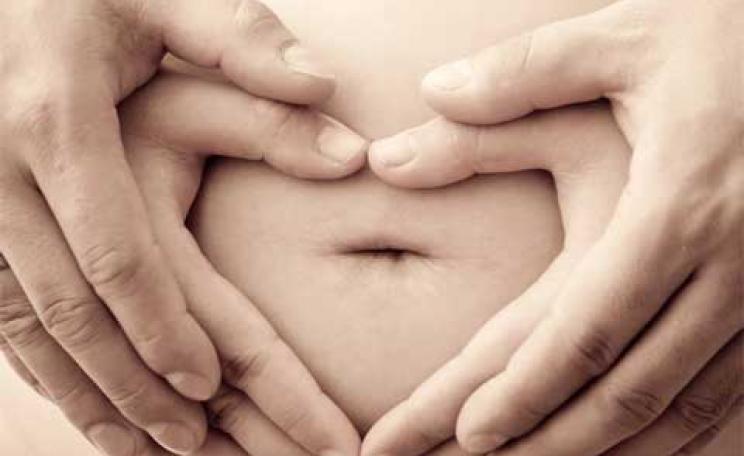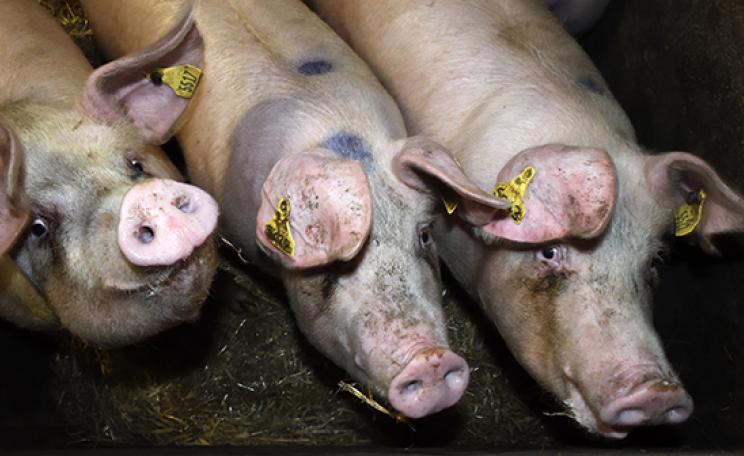My partner's first cesarean, whilst swift, was disorientating, cold and left my other half feeling cheated.
Lying on her back, she couldn't see or feel anything, having been given a powerful anesthetic. I could see the staff - their expressions informing whether the operation was going to plan - the bleeping equipment, the blood splashing on the floor, the whitewashed walls. The cutting of the abdomen and subsequent extraction was done out of sight, behind a screen they never seem to bother with on television. Baby was brought into the world, fleetingly given to mum, then handed to me for carrying into the weighing room.
We were later told separation isn't standard procedure, and that the medics must have felt there was an urgency with doing my partner back up, and didn't want distractions. That night I had to leave the maternity ward by 8pm - visiting times are strict, with everyone apart from mother and child kicked out, no exceptions.
My partner was put in a bed in a crowded room, a blue curtain separating her from half a dozen other mums plus (wailing) newborns. Our daughter was placed in a white plastic cot adjacent to the bed. Having been sliced open and stitched back together again just hours before, reaching over the short distance to pick our daughter up was difficult, if not impossible, that first night. When she moved, the pain was intense, despite being given a cocktail of drugs. She had to press the buzzer to get a midwife to help every time she wanted to lift her baby up to comfort or attempt to feed her. The first time the nurse was more than willing, by the fifth time there was resentment.
In the morning, having had not a minute of sleep - she'd been awake for more than 72 hours by now - my partner was unable to properly tend to her baby or to attempt a shower. She described feeling like the contents of her abdomen were going to fall out onto the floor if she moved. With my help - I'd arrived at 9am, the beginning of visiting hours - she managed to wash. The staff were economic with sympathy for her inability to move around.
Once home after some three days, the difficulties arising from an invasive birth continued to dog my partner's joy of being a new parent. Doing virtually any normal daily task was difficult, doing everything that our newborn daughter required was impossible. How would someone cope alone? About a week after the birth, mum and baby took their first, tentative trip out. Every step felt alien, she described, the feeling that the stitches were going to come undone at any time persisting. We later attributed this stroll to the nasty infection that settled in my partner's cut. Although treated, the infection set recovery back, and heightened anxieties.
It was not the physical difficulties that most blighted those post-birth days however. It was the psychological impact of not having had the birth she'd wanted. She felt cheated, having originally wanted a home, or at the very least, natural, delivery. Prior to the birth, owing to the anticipated size (over 11lbs) of our baby one consultant had insisted only a C-section would do. Another consultant had said she could ‘try natural'. The decision was effectively made by the stark warning that if my partner ‘went natural' and the baby became stuck - ‘very likely' according to consultant one - they may have to dislocate her shoulder in order to try and bring her out. Afterwards, opinion was that ‘natural' would have been fine, especially as our daughter weighed in at a much more reasonable (if large) 10lbs. Although acknowledging all medics involved were acting in her best interests, my partner remained deflated - this was not the exhilarating, empowering birth she had wanted, and definitely not what was ‘sold' in the baby magazines.
She therefore had high hopes for a natural birth second time around. But during a routine early scan she was diagnosed with the potentially dangerous condition placenta previa where the uterus becomes blocked by the placenta.
Although in some cases diagnosed women go on to deliver naturally, as my partner's due date approached it became apparent this wasn't an option.
Without intervention, there would be no birth, consultants said on their daily tour of the ward (my partner was hospitalised for the final stage of pregnancy having had a major bleed at home). In countries without adequate medical care, this condition is quite simply a death sentence for mother and child. The operation this time around made the first look like a walk in the park. Surrounded by up to twenty medics - doctors, consultants, anesthetists, nurses and support staff - the initial extraction went smoothly. However, minutes after delivery the surgeons couldn't get the bleeding to stop. This is always a risk with placenta previa. For the next three hours at least - time moved in slow motion - we watched (from behind a screen) as the medics worked through the full spectrum of options available to them to stem the bleeding.
First the clotting drugs, then the ‘figure of eight' stitch, then something called the ‘bakri balloon', a little-known ‘last resort' that quite literally saw a balloon type device directly inserted into my partners' womb to bring extra pressure to bear on the uterus.
The latter worked. But she'd lost so much blood she needed a transfusion - urgently. Several hours after the birth, she was lying in intensive care, hooked up to the blood pack, to a catheter, to a ‘wound drain'. Her son was placed in a white plastic cot adjacent to the bed. He was fine, mum was traumatised. Needless to say, the birth she'd wanted hadn't involved major surgery.
But the operation, the C-section, performed by brilliant, dedicated surgeons, had not only saved our son's life, it had saved hers. The ability of modern medicine to deliver babies via C-sections is nothing sort of a miracle. But would you choose one?
| READ MORE... | |
 |
NEWS ANALYSIS Maternity special Birth uncut: how women were turned off natural childbirth Tested, assessed and treated as patients rather than mothers-to-be, it's no wonder women are afraid of giving birth naturally, says Pat Thomas as International Women's Day arrives |
 |
NEWS ANALYSIS Maternity special Labour of love: the demise of traditional midwifery Women-centred maternity care through midwifery is in danger of extinction, replaced by a medical model that treats birth as an illness. Birth is an act of love, not one of fear and loathing, so what are the consequences? Matilda Lee reports |
 |
HOW TO MAKE A DIFFERENCE Maternity special Top 10 myths about new parenthood Worried your life, your marriage, your baby or your body isn't 'normal'? Don't fall foul of the myths of parenting |
 |
HOW TO MAKE A DIFFERENCE Maternity special Flash 'em: how breastfeeding got political An exclusive interview with Claire Jones-Hughes - the woman behind Brighton’s now famous breastfeeding flash mob. By Matilda Lee |
 |
GREEN LIVING Maternity special Top 10...tips for a natural labour Whether it’s raspberry leaf tea or a spot of stretching, pregnancy massage specialist Holly Jeffery suggests some all-natural ways to keep labour pain at bay |








